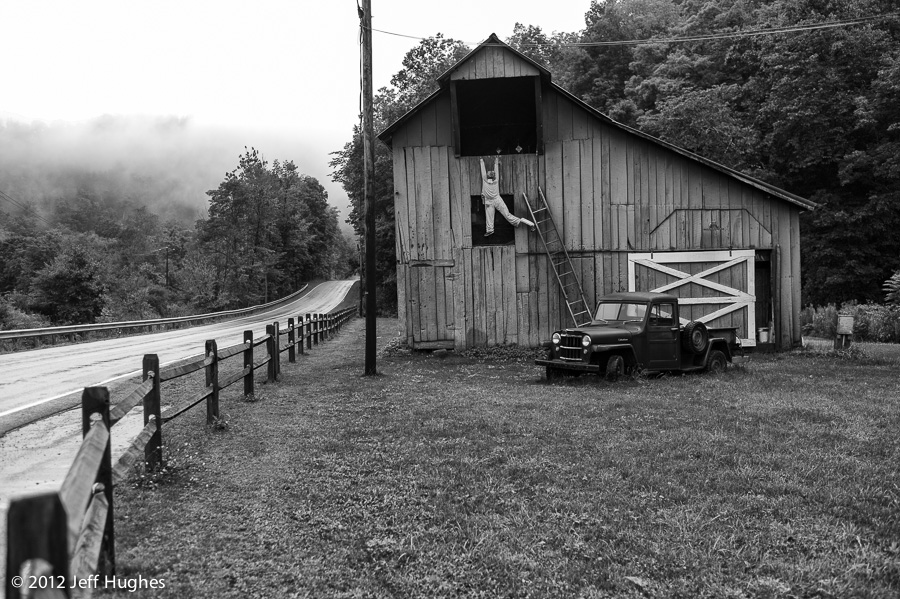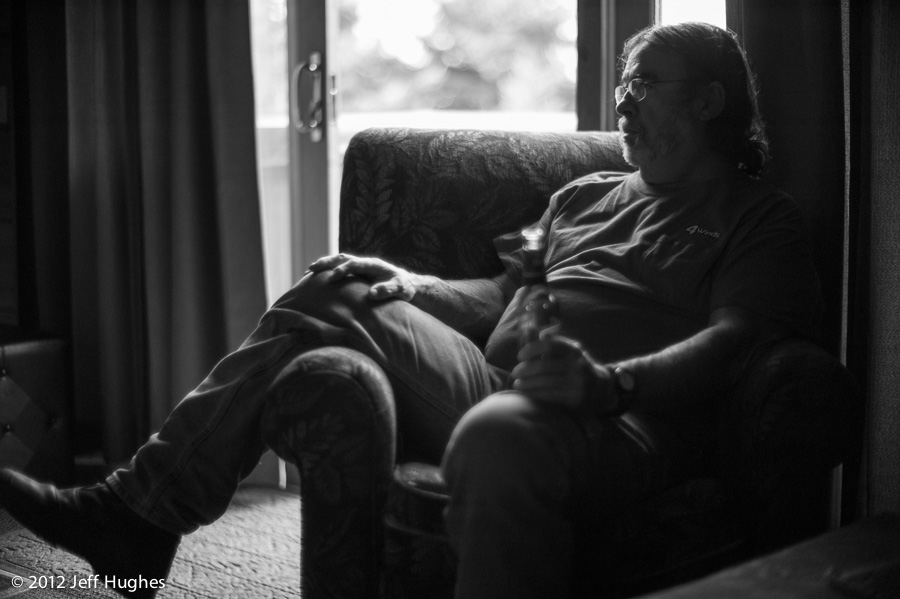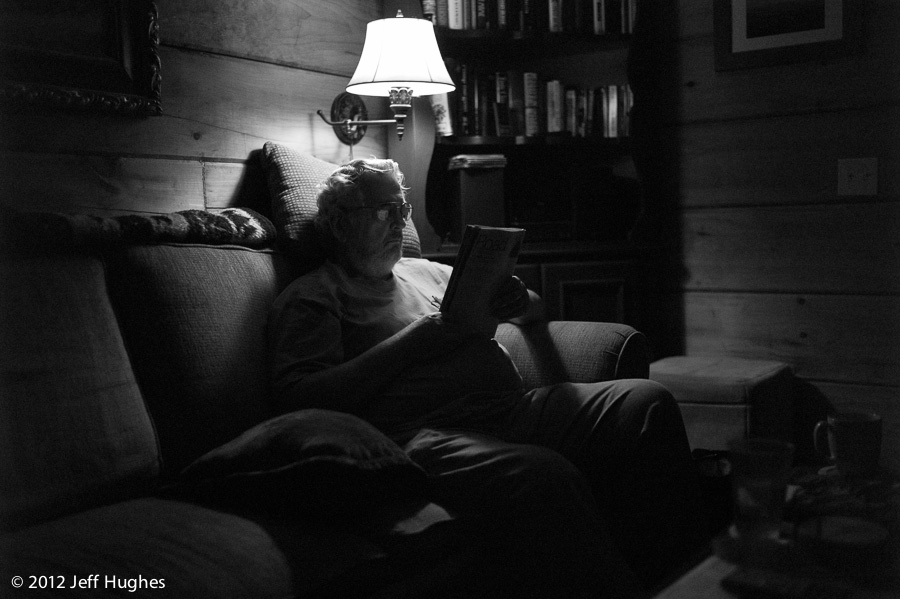
Leica M Monochrom
Like many, I was disappointed on May 10th - Leica's much anticipated product announcement. After three superlative years with the M9 – far and away the best camera I have ever owned - I was waiting for the M10.
Alas.
The M Monochrom? Well, that was an intriguing bit of news. But not exactly what I wanted or expected.
Still, if you’re a fan of Leica – something I’m more than happy to acknowledge - you pay attention. As the days and weeks slowly rolled by, the reviews and the comments by the folks who had given the MM a test drive continued to pique my interest.
Like others, I was (and am) very pleased with the black and white output from my M9. When the folks putting together the Life of Medgar Evers exhibition in Jackson, Mississippi called a couple months ago and asked if they could use one of my images I was more than happy to oblige. Robust and resilient, I knew the file would hold up to printing exceptionally well. Any consideration of the M Monochrom must start from an understanding that the M9 is already a very powerful black and white tool.
How much better could the MM be?
The high-ISO capability was a given, of course. When I bought my D3 some years back, the word that kept coming to mind was ‘transformative.’ Being able to get clean images at 6400 was a luxury I could not have imagined before that breakthrough camera arrived. Ever since I have wondered how amazing it would be to have the same capability in a Leica M.
Suddenly it’s there.
But even with that bright gift, I was given to pause. The internet is a poor vehicle for representing nuance and subtlety. Notwithstanding the consistently positive feedback from those who had actually used the MM, rising to the level of lyricism at times, the images they presented didn’t look that much different.
And I was still fixated on the M10. I’m a lock for that camera, whenever it arrives. I’m first in line at my local dealer. And I have every expectation that whatever qualitative advantages the M Monochrom holds – being able to wring every last ounce of performance out of the new 50 APO Summicron, for instance – the M10 will likewise bring to the table.
I also wasn’t bought in to the whole ‘purity’ notion that the MM espoused. For years now I have happily glommed to the digital hybrid of having both color and black and white imagery available at the click of a mouse. Go take pictures. Figure out the rest later. I confess to very much liking the ability to apply filter effects – and an infinite variety of them, at that - in post, long after the shot has been taken. And yet even as I thought those things, nodding my head at the seductive convenience, a voice in the back of my head was whispering.
Back in 2010, for six months, I shot my M9 not just with a single lens, but also at a single f-stop. The Noctilux never came off my camera. For half a year I viewed the world at f1. That was a contrived exercise, of course. A bit of artifice. But what it taught me was that imposing limits can bring a clarity that is otherwise difficult to find. There is a peculiar strength that arises out of simplicity.
Photography is a demanding, hard mistress. It imposes upon us – even the best among us - numerous failures for every success it allows. A temptress, it will break your heart.
And then, just when we’ve concluded that this all sucks and we might as well take up quantum physics as a hobby, it serves up something special. A seductive glimpse into a place we can hardly imagine. And so on we go.
When I thought about my photographic journey across the years, I was reminded that the vast majority of those images that I have liked best, those special ones that give me that little rush, were pre-visualized. They weren’t luck. They weren’t serendipity. I saw them in my mind’s eye before I ever raised the camera.
Walk out the door with an M3 and a roll of Tri-X and you see the world in a different way. Without an exposure meter, you’re forced to really look at light. To see it in a very different way.
Likewise, back in the day, those of us who shot black and white film exclusively, or nearly so, had to learn to visualize in a different way. We had to learn to see tone, not color; luminance, not contrast.
It made me wonder. Despite a strong bias towards black and white imagery, I realized that shooting with modern digital cameras has made me lazy. When I walk out the door with my beloved M9, even though my previews are set to black and white - I’m mostly, really, seeing the world in color. I do that even as I know there will be a predisposition for my images to end up in monochrome. That long ago shooter who would routinely imagine the world the way Tri-X sees it had gone missing.
And so it was I began to wonder what images I might have ceded to the mists of time.
There is that breathtaking cost, of course. Those who want a rationale not to buy the MM have plenty of reasons they can bring to bear, that first and foremost. And yet I would point out that those of us in the Leica world already live in a place of diminishing returns. A thousand-dollar DSLR and a hundred-dollar prime lens will get you 90% of what is available from current 35mm photographic practice. Those of us who buy Leica don’t do so because of the value proposition. No, we pay that premium for nuance and subtlety. In the hope that the aggregation of small advantages will occasionally make a difference.
The last bit of serendipity, of shocking luck, was the phone call to my dealer. More out of simple curiosity than purposefulness.
“I understand the first batch of Leica Monochrom’s are shipping. I don’t suppose you have any in stock?”
“Well,” came the reply, pausing for just a moment. “I think we might have one. Hold on.”
And so there it was, wholly unexpected. I was stunned. Sixty seconds to come to some sort of conclusion. A single minute to choose what might end up being, in retrospect, a very meaningful fork in the road.
The voice came back on the line. “Yes, we do have one.”
A quick drawn breath, held for the space of a heartbeat, and then one more. “Okay, hold it for me, will you? I’ll be there in an hour.”




Other photographers, far better than me, will demonstrate over the weeks and months to come what this camera can do. What I can say is, after just a few days and a few dozen initial images, my impressions are very positive.
As I expected, the high-ISO capability is to die for. It is freeing in a way that is hard to describe.
Image quality is exactly what all those reviewers gushed about in the weeks after the camera’s introduction. Yes, the difference between MM and M9 images at full resolution is subtle rather than dramatic. It is, however, always, consistently there. And zooming deep into the DNG files in Lightroom reveals a level of detail and acuity I’ve not seen before. M9 files have always been robust. MM files take that to a whole new level.
Metering does seem to be a bit different from the M9. For a given subject, the Monochrom seems to overexpose more than its color predecessor, albeit not to the point that highlight clipping is a problem. I’ll be exploring MM metering patterns more in coming weeks.
And last night I went and dug out the old camera bag that did yeoman duty when I was shooting daily with my M6 and M7. Searching through its pockets, I found the handful of yellow, yellow-orange, and red filters that sat there unused for years. I didn’t use them a lot back then, and don’t expect to now, but it’ll be interesting to see how they work on the MM.
Ten days ago, not knowing I’d soon be exploring the virtues of the Leica M Monochrom, I went online and ordered a brick of Tri-X and a few rolls of Delta 3200. It had been too long. With Kodak looking to sell its film division, a lot of us are wondering what lies in store for those film stocks we have long loved. Somehow, perversely, and in the midst of all that uncertainty, I’m glad that in the MM we perhaps have another option to help keep alive that black and white ethos that has brought so much joy, for so long, to so many of us.
Purity, indeed.
Additional images can be seen in my Leica M Monochrom Gallery. It will be updated periodically.
© 2012 Jeff Hughes